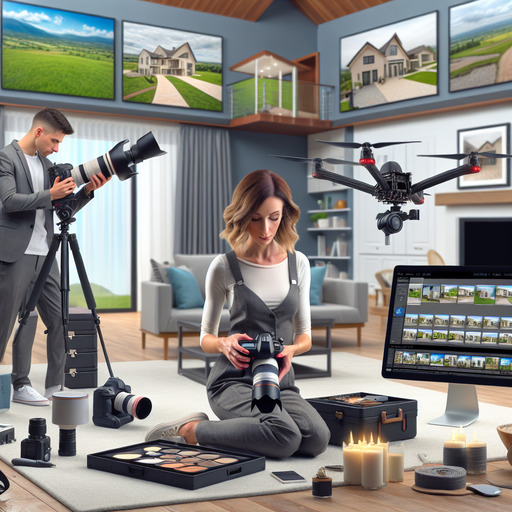
-
Table of Contents
- Mastering Real Estate Photography: Tips, Techniques, and Tools
- Understanding the Importance of Real Estate Photography
- The Impact of Quality Photos on Property Sales
- Essential Real Estate Photography Tips
- 1. Use the Right Equipment
- 2. Master Real Estate Photography Lighting
- 3. Perfect Your Composition
- Advanced Techniques: Real Estate Drone Photography
- Benefits of Drone Photography
- Editing and Enhancing Real Estate Listing Photos
- Real Estate Photography Services
- Pricing Your Real Estate Photography Services
- Conclusion
- Questions and Answers
- 1. What is the best time of day for real estate photography?
- 2. How can I improve my real estate photography skills?
- 3. Is drone photography necessary for all real estate listings?
Mastering Real Estate Photography: Tips, Techniques, and Tools
In the competitive world of real estate, first impressions are everything. High-quality real estate photography can make or break a property listing, influencing potential buyers’ decisions before they even step foot inside. This guide will explore essential tips, techniques, and tools to elevate your real estate photography game, ensuring your listings stand out in the crowded market.
Understanding the Importance of Real Estate Photography
Real estate photography is more than just snapping pictures of a property. It’s about capturing the essence and potential of a space, enticing buyers to envision themselves living there. According to the National Association of Realtors, 87% of home buyers found photos to be the most useful feature of online property listings.
The Impact of Quality Photos on Property Sales
- Properties with high-quality images sell 32% faster than those with lower-quality visuals.
- Listings with professional photos receive 118% more online views.
- Homes priced between $200,000 and $1 million sell for $3,000 to $11,000 more when they feature professional photography.
Essential Real Estate Photography Tips
To capture stunning real estate photos, consider these practical tips:
1. Use the Right Equipment
Investing in the right real estate photography equipment is crucial. A DSLR camera with a wide-angle lens is ideal for capturing expansive room shots. A sturdy tripod ensures stability and sharp images, especially in low-light conditions.
2. Master Real Estate Photography Lighting
Lighting can make or break a photo. Natural light is your best friend, so schedule shoots during the day when rooms are well-lit. Use additional lighting equipment to fill in shadows and highlight key features.
3. Perfect Your Composition
Composition is key in real estate photography. Use the rule of thirds to create balanced images. Ensure vertical lines are straight, and capture multiple angles to showcase the property’s best features.
Advanced Techniques: Real Estate Drone Photography
Real estate drone photography offers a unique perspective, capturing aerial views that highlight the property’s surroundings and layout. This technique is particularly effective for large estates or properties with stunning landscapes.
Benefits of Drone Photography
- Provides a comprehensive view of the property and its surroundings.
- Highlights features like pools, gardens, and nearby amenities.
- Creates a sense of scale and context for potential buyers.
Editing and Enhancing Real Estate Listing Photos
Post-processing is an essential step in real estate photography. Use editing software to adjust brightness, contrast, and color balance. Remove any distractions and enhance details to create polished, professional images.
Real Estate Photography Services
Consider hiring professional real estate photography services if you’re short on time or expertise. These services offer comprehensive packages, including shooting, editing, and even virtual staging.
Pricing Your Real Estate Photography Services
Setting competitive real estate photography pricing is crucial for attracting clients while ensuring profitability. Consider factors like location, property size, and the complexity of the shoot when determining your rates.
Conclusion
Mastering real estate photography requires a blend of technical skills, creativity, and the right tools. By following these tips and techniques, you can create compelling images that enhance property listings and drive sales.
For more insights into real estate photography, check out this Wikipedia page on real estate photography.
Questions and Answers
1. What is the best time of day for real estate photography?
The best time for real estate photography is during the day when natural light is abundant. Early morning or late afternoon provides soft, diffused lighting that enhances the property’s features.
2. How can I improve my real estate photography skills?
Practice regularly, study professional real estate photos, and experiment with different techniques and equipment. Consider taking courses or workshops to enhance your skills further.
3. Is drone photography necessary for all real estate listings?
While not necessary for all listings, drone photography is beneficial for properties with large outdoor spaces or unique surroundings. It provides a comprehensive view that traditional photography cannot capture.
If you’re interested in learning more about our real estate photography services or have any questions, please contact us.